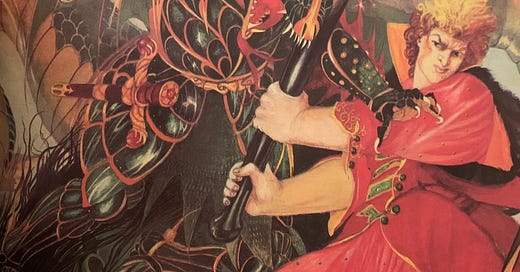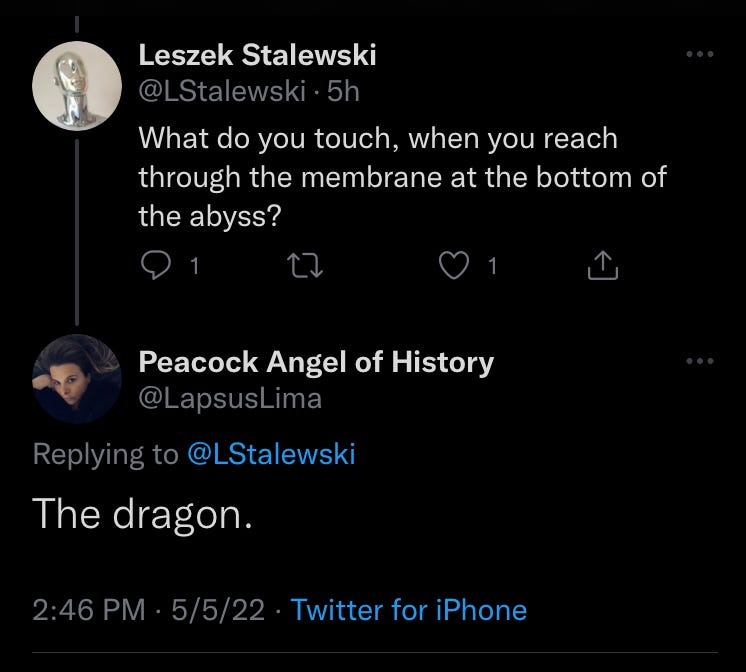It is the most shattering experience of a young woman’s life when one morning she awakes and quite reasonably says to herself: I shall never plague the Dane.
Such was Ophelia’s case, whose ghost was offered no point of re-entry. Like a lentil, she was left to sit in water till her spirit softened and her body trebled in volume. By the time she was dragged out of the stream she was nothing but layers, a haint built like a millefeuille, unreconstructible, impossible to piece together into a coherent out[r]age, Hamlet’s undescended testicle.
The Lady of Shallot was cursed to continuously weave images on her loom without ever looking directly onto the world. She is the foremost Romantic representative of Plato’s troglodyte. Infatuation —the glimpsing of Sir Lancelot— detonates her curse, and her first and last act of immediacy finds her dying like a fish above water on a boat to Camelot, where Lancelot mirrors her by remarking on her newlydead beauty.
Would you know if I were dead, let alone alive?
I have seen prospective suicides carried out of waves like kittens in the jaws of orixás. (Nobody knows the day or the hour, but points for trying if you hit the mark).
All this to say, no small number of Tiamat’s children were dragons. The oceanic, halved mother; the profuse, titanic children, the family romance of monsters, of old gods and all gods and new.
Irresponsibly, maybe, I wrote about dragons before I ever met one, from the vantage of Rimbaud’s last daze. I was neither of the hunted nor among the haunted then. I’d yet to see the woman weave into the waves during the feast of Yemanjá, her form halflit and fragmented by Chinese lanterns, where I said nothing as she sank into her chiaroscuro.
Past the mimic abyss, the hiss in the kiss, is the altogether other; its scales a sea of obsidian, Enochian and mesopotamianly accurate.
Alexander Koshkin, illustrator. Elizabeth Warner. Heroes, Monsters and Other Worlds from Russian Mythology. Peter Bedrick Books, 1985.





